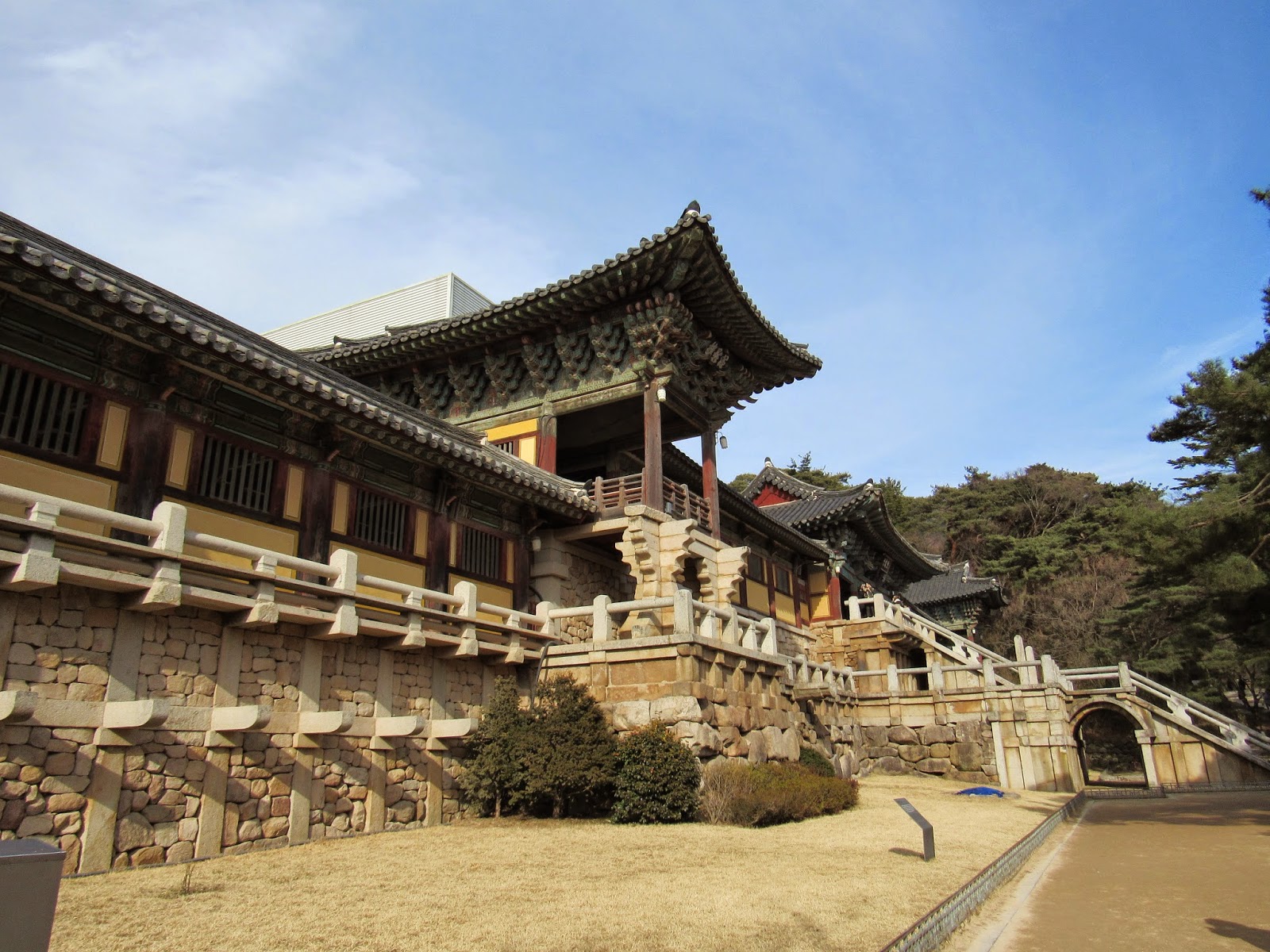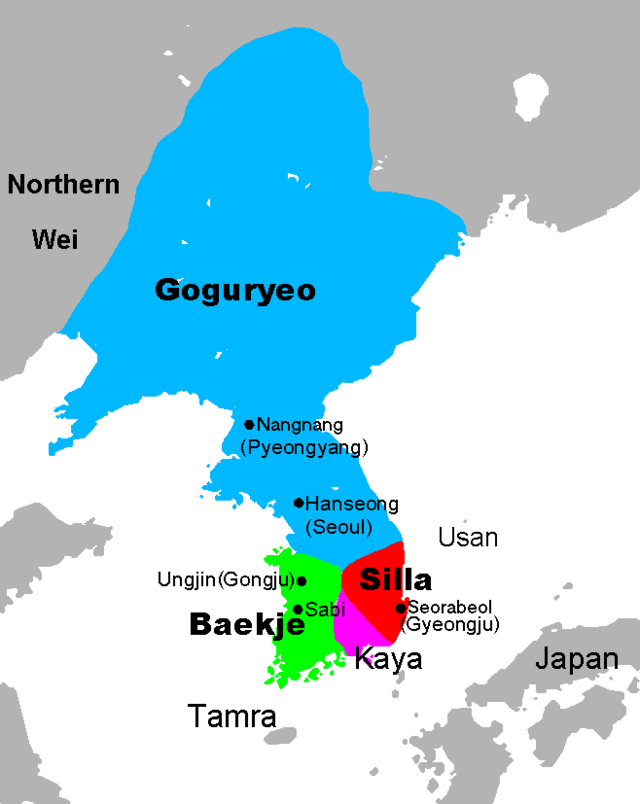Mark's Guide to Korean Food:
Without a doubt, one of the best things about Korea is the food and we've taken full advantage of that here, like this guy.

Though often very different from Western flavors, and occasionally still alive or piss-tasting, for the most part, Korean cuisine is delicious and pretty approachable, unless you're Joe Katarsky probably. Yet, in Michigan at least, the variety of Korean offerings available are pretty restricted to the basics: bibimbop, bulgogi, maybe a decent barbecue restaurant, but while these things are good, they represent only a small portion of the Korean food spectrum and may not even be commonly seen here in Seoul. So whether you've never had Korean food before, or if you've frequented "Korean night" dinners at Seoul Garden with Peter, Jooho, Eunice, and me, here is a rundown of Korean cuisine basics and oddities.
The Staples:
Kimchi 김치: This is more than just a Korean staple--it's a necessity. Served with literally every meal, kimchi as most people are acquainted with it, is napa cabbage fermented with red chili flakes, salt, garlic, and shrimp paste, but kimchi actually refers to hundreds of different permutations of vegetables pickled in various spice mixtures served with specific dishes in specific seasons. In its most basic form, kimchi dates back to the Three Kingdoms Period, but modern kimchi wasn't created until chili peppers were brought to Korea from the New World through Japanese invasion in the late 16th century.
Koreans are soooo into kimchi that a cabbage shortage in 2010 was considered a "national crisis" and the national government temporarily suspended tariffs on foreign cabbage to cope with the dearth. Furthermore, during the Vietnamese war, special arrangements were made to bring kimchi rations to South Korean soldiers because their morale was suffering so much from kimchi withdrawals.

(If you get it, I love you.)
Banchan 반찬: Really more of a course than a particular food, banchan refers to all those little dishes of "stuff" you get before your entrees come out at Korean restaurants and are meant to be eaten with rice (밥) as appetizers. Kimchis usually account for a couple of the banchan at a given meal, but other common types of banchan are namul 나물, lightly seasoned vegetables that are steamed, stir-fried, or marinated; bokkeum 볶음, vegetables, meat, or seafood stir-fried in sauce; jeon 전, savory pancakes (so good); broths; and other things.
Peter and some banchan, from top-most, clockwise: 떡볶이 spicy rice cakes, cucumber kimchi, roast potatoes, fresh (not fermented that long) kimchi, and 도토리묵 acorn jelly.
Korean Fried Chicken 양념 치킨: The holy grail of fried chicken, you might be surprised to find out that no one does fried chicken better than Seoul. Distinguished by its thin and extremely crispy twice-fried skin, always juicy and tender meat, and many flavor choices, such as plain seasoned, spicy chili, honey soy, and green onion (pictured below), Korean fried chicken has become a bar food (안주) staple in Korea. It is served with pickled radish, corn slaw, beer, and soju, just as god damn well intended. For inquiring Ann Arbor minds, I think that Seoul Street's chicken is about as good as what you can get in Seoul, but significantly different in texture.
Yusss.
My Favorites:
Kalguksu 칼국수: This is actually not my favorite; I'm including it only because Peter and Grace are obsessed with it for some reason and I can say something snarky about it because this is my blog. While this seafood-based broth with soft wheat noodles is hearty and filling, I thought it was just kind of bland and uninteresting at the end of the day and tastes like what my impression of Into the Woods would taste like if it were a soup. However, it is an excellent hangover food (which actually has its own word in Korean culture: 해장 haejang) after a night of too much somek (beer and soju bombs); incidentally, it also goes great with beer and soju.
You also eat it with spicy kimchi and dadaegi 다대기 (no English translation, but a spicy sesame oil with chopped scallions), presumably to add some flavor to an otherwise rather flavorless dish.
It is so fucking good. It is incredibly refreshing, unique, and sophisticated in flavor, texture, and composition and I've had it four or five times here already with no signs of becoming inured to its delicious charms. While originating the North Korean cities of Pyongyang and Hamhung, naengmyeon is now very popular throughout Korea, though quality and recipe vary significantly from restaurant to restaurant and it can be tricky to find a place that really does it well. Unfortunately, it's even tougher in the States and if you can find it at all, it's still probably not going to be very good. Guess I'll have to come back.
It may not look like much, but trust me. Also, soju enhances the dining experience.
Naengmyeon is so popular that there's actually a 2012 hit pop song called "Naengmyeon" which you can see here, no bullshit. https://www.youtube.com/watch?v=0zGDQ9r36p4
Bossam 보쌈: I know, you get the meat sweats just looking at this picture. Bossam is another somewhat subtle, but no less delicious Korean dish that's hard to get at home. It's thick-cut slices of pork belly par boiled in an aromatic broth and then served 쌈 ssam-style: wrapped in Korean lettuces or herbal sesame leaves with fermented shrimp 새우젓, bean paste 쌈장, raw garlic, fine strips of scallion, and crisp, fresh (barely fermented) kimchi. It is extremely fatty, succulent, and a must for meat lovers. Oysters and pork bone broth 가자당 usually accompany it and it is a very popular drinking food 안주 (anju), as its fattiness and saltiness pair amazingly well with soju.
Bossam is in the middle, cuddling with some smoked duck breast and sundae sausage 순대. All of this was less than $30 (plus soju).
And now for a word from our sponsors, Chumchurum Cool Soju:
Chumchurum Cool Soju: It's Seoul-tastic!
Bingsu 빙수: Bingsu is a popular dessert here made of ribbony piles of velvety soft shaved ice with sweet toppings. While the original patbingsu dates back to the Joseon Dynasty (1400-1900ish, roughly, between the Three Kingdom's Period and the Japanese occupation) and consists of plain shaved ice and sweet red bean paste, contemporary varieties come in all kinds of flavors with many modern and traditional topping options. It can be a bit pricey, but it's so good thatitdoesn'treallymatterjustneedtoeatitnom.
Chocolate bingsu with almonds, brownies, and bananas -->

TimTams 팀탐스: Okay, okay, so they're not Korean, but I was finally reunited with TimTams in Seoul after five long years of separation since we first met in Sydney in all their double cookie layered, chocolate-covered, straw-for-hot-chocolate-drinking-makeable-into deliciousness.
All those long years, but I never stopped looking. I never stopped looking.
The Weird:
Pork Lung and Liver 하파 와 간: The idea of eating organs is generally unappealing, but especially so, I think, for med students whose experience is further colored by an inconveniently intimate knowledge of said organs' physiology and microanatomy. Served with sundaeguk 순대국, a stew of the pork blood, barley, and cellophane noodle sausage in pork intestine casing that I mentioned earlier (actually quite good), I gave these traditional accoutrements a try. The lung actually wasn't too terrible and had a texture and flavor similar to pork sausage, but the bronchioles and lobules staring you in the face are not exactly appetizing, nor is the notion that it's, ya know, a fucking pig's lung.
Liver top, lung bottom.
Liver though, I have never liked. I've had it multiple times in multiple forms and the flavor and texture is unapologetically visceral and I usually react like this.

Boiled Silkworm Chrysalises 번데기 (Beondegi): A bowl of these caught my eye on a street vendor's cart one day, and I figured we had to try them. While it makes sense to me that beondegi (bun-DAY-gee) became a thing when the ancient Chinese were trying to figure out what to do with the pupae after they had boiled away the cocoon silk, I just made that up right now because I'm practicing my Fox News impression; so that may or may not be true.
In any case, they were pretty innocuous overall--not bad, but certainly not good either--tasting kind of like mildly salted cardboard. Over the last few weeks, I undertook Operation Beondegi Improvement and am discouraged to report that grilling, hot chili paste 고추장, garlic, and accidental burning do not significantly improve the overall beondegi experience.
Just think of them as salted peanuts, except for they're cooked bugs.
Mike's reaction very accurately sums up beondegi.
Hongeohoe 홍어회: If you haven't read my post dedicated to this fucker, you can see it here: http://markkgweehyang.blogspot.com/2015/02/1-seoul-food-part-1-hongeohoe.html
The flavor is said to be similar but slightly less vomit-y than hakarl, the notorious Icelandic dish of fermented shark chunks that you may have heard of. And that brings us to a word from another one of our sponsors.
Hakarl Lite: half the calories, half the ammonia, and half the involuntary dry heaving of Hakarl Classic.
Live! Octopus 산낙지: This is the doozie. Sannakji is live small octopuses (the correct plural of "octopus") cut up on the spot and then served wrigglingly fresh with salt, sesame oil, and chopped scallions. It is a pretty popular 안주 drinking food and though it originated in the coastal southwestern areas of Korea, you can find it just about anywhere if you really want it, which, I bet you don't. If you are still interested though, you might like to know that sannakji causes the odd fatality more years than not. That's because it is also sometimes served whole--yup, a whole live little octopus. But, if it's not eaten properly: wrapped around chopsticks and chewed quickly and thoroughly, the unwitting diner--usually inexperienced, overconfident, and/or schwasted--the little guy can make a beeline for your trachea to exact swift, suction cuppy, asphyxiating vengeance.

Like this.
So I opted for the more common chopped up version. I first saw sannakji on television several years ago and didn't think it would be something I'd ever try, but here we are. Surprisingly, it was actually quite good with a simple and honest ocean-y taste accented well by the sesame and scallions and the texture was like a chewier oyster. Unsurprisingly, it was still wriggling and suctioning, which was definitely strange, but not bad when you're expecting it. Honestly, I wouldn't go out of my way to order it again, but I definitely wouldn't mind ordering it again to initiate another friend into the club--any takers? (Alan was offered and punked out.)
There's a longer video of me eating it, but it wouldn't fit here.
So that's my rundown of some of the highlights--good and bad--of Korean food. With a very small number of exceptions, everything we've had has been excellent, authentic, and pretty reasonably priced, so if you're up for a little adventure, I would say Korea is an excellent foodie's destination.

You people who think like this know who you are.
Updates and Things:
Old People Exercising (3/10): Here are pictures of old Korean people doing weird, questionably effective exercises. And here's "Eye of the Tiger" in case you're so inclined: https://www.youtube.com/watch?v=btPJPFnesV4
Orange track suit lady getting it.
Giant hula hoop.
This athletic wear though.
Boom!
BOOM! Fucking majestic.
1. EXID: K-Pop
2. 2PM: K-Pop
3. FHIT: Cancer Gene
4. Sistar: K-Pop
5. JAZF1: Cancer Gene
6. RUNX3: Cancer Gene
7. T-ARA: K-Pop
8. JYJ: K-Pop
9. AURKA: Cancer Gene
10. MTHFR: Cancer Gene
11. MOA: K-Pop
12. TVXQ: K-Pop
Teaching Minsoo English (2/26): Megan is from Minnesota, and when Minsoo wanted to learn how to say which state all the Americans were from, she started off pretty well: "Maryland," "Michigan," oh weird, all "M" states, but then we got to the last one, which after hearing it once, without a beat of hesitation, came out "Minsoo-so-ta."
Nailed it, girl.
Adoption Update (3/6): I'm going to see Korean Social Service, which handled my and Stephanie's adoptions, to inquire more about my adoption and the progress in finding my biological family. I'll report back with what I find out.
Match Day (3/19): Tomorrow is match day, when I find out where I'll be spending the next four years of my life as an Internal Medicine & Pediatrics resident. It's late here and I'm not fully acclimated back to Eastern Time, so I better try to get some shut-eye.
Time to Say Goodbye (3/17): Today is my last day in Korea, which means my time here is unfortunately at an end and so is this blog, so the next post, which will be finished by Monday, will be the final post.
Goodnight, friends!
Mark









.JPG)
.JPG)

















































 which I call "the sexy paintbrush," and this:
which I call "the sexy paintbrush," and this:



.JPG)













